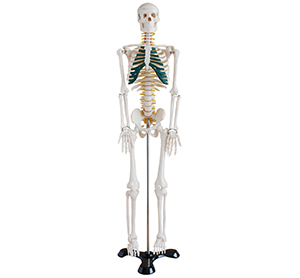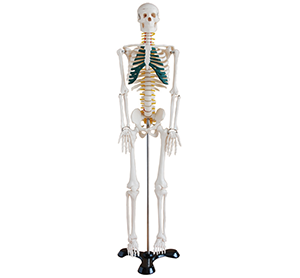In medical education and clinical practice, as an intuitive teaching tool, the human skeletal belt neural model has the potential to improve anatomical cognition. The model closely integrates the skeletal system with the nervous system through fine construction and realistic design, and provides a three-dimensional and intuitive learning platform for medical students and medical staff.
First, from the perspective of cognitive science, the combination of vision and touch can greatly promote the cognitive process of learners. The bone structure in the model is clear, and the nerve distribution is intricate, which helps learners to quickly establish the overall understanding of the human anatomy. At the same time, by touching the model, learners can feel the bone shape and nerve direction more deeply, so as to deepen the understanding and memory of the anatomical structure.

Secondly, the application effect of the model in anatomy teaching is also obvious. In medical education, anatomy courses are often the basis for students to understand the structure and function of the human body. However, the traditional anatomy teaching methods often rely on plane images and text descriptions, and it is difficult to intuitively show the three-dimensional relationship and dynamic changes of the human body structure. The human bone belt neural model can make up for this deficiency. Through the three-dimensional form of expression, students can more intuitively understand the connection between bones and nerves, so as to deepen the understanding and cognition of anatomical structure.
In addition, the model has certain interactivity and maneuverability. Learners can operate models that simulate different anatomical processes, such as nerve conduction, muscle contraction, etc., to gain a deeper understanding of the dynamic relationship between the structure and function of the human body. This interactivity and operability not only help to enhance learners' interest and participation in learning, but also cultivate their practical ability and innovative thinking.
To sum up, the human skeletal belt neural model has significant advantages in improving anatomical cognition. It can help medical students and medical staff to have a deeper understanding of the relationship between human structure and function through intuitive expression forms, rich teaching contents and interactive learning methods.

